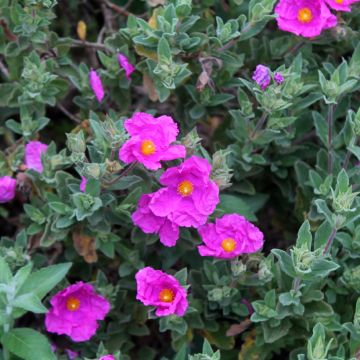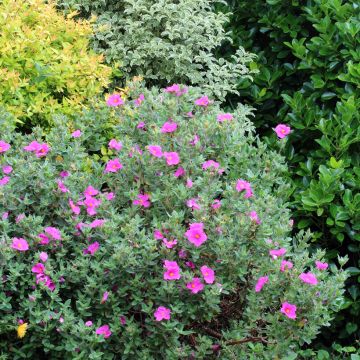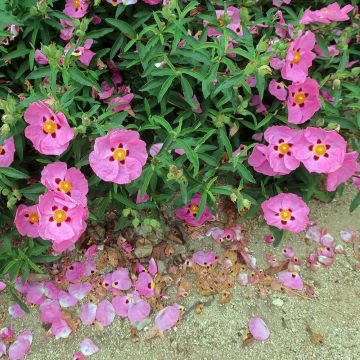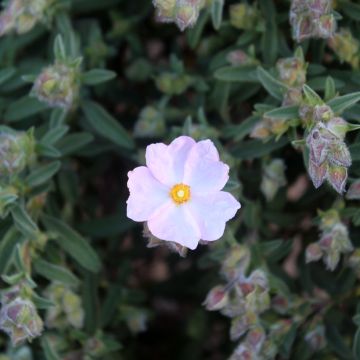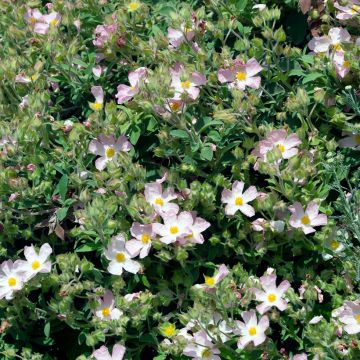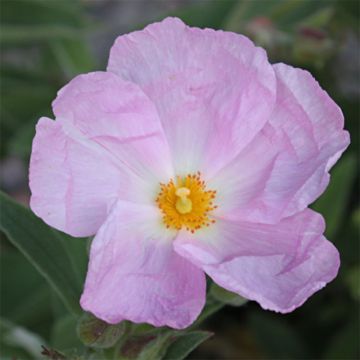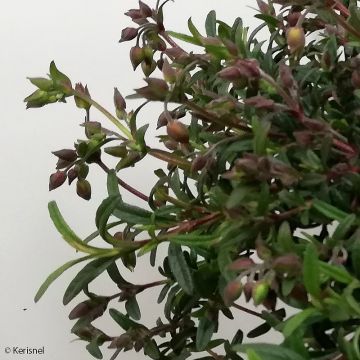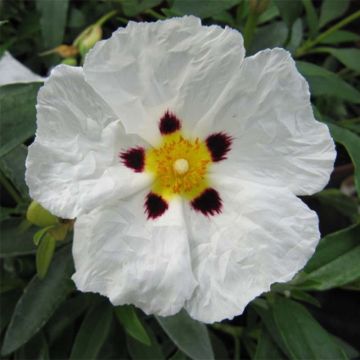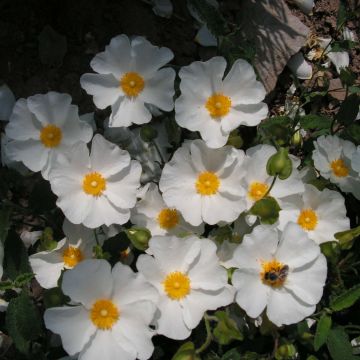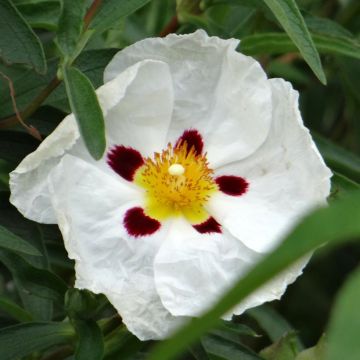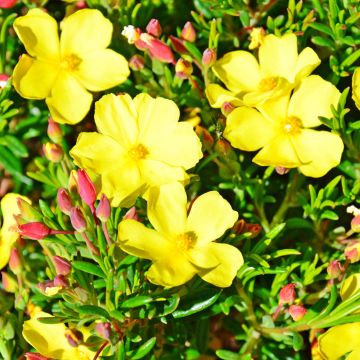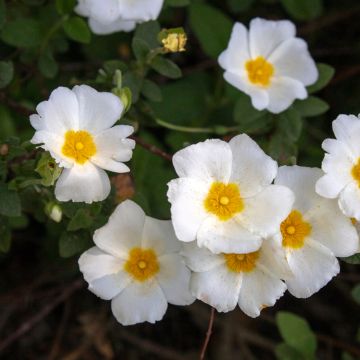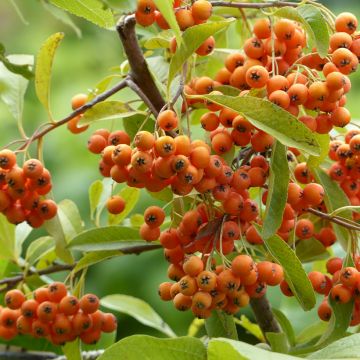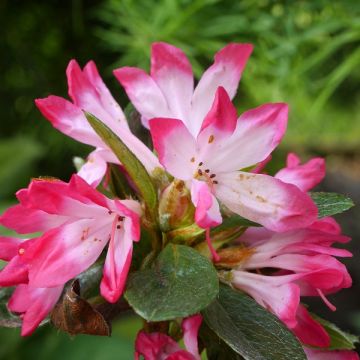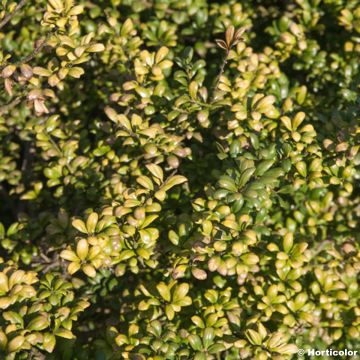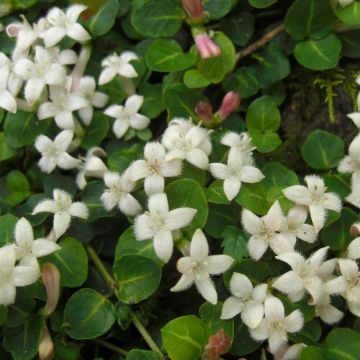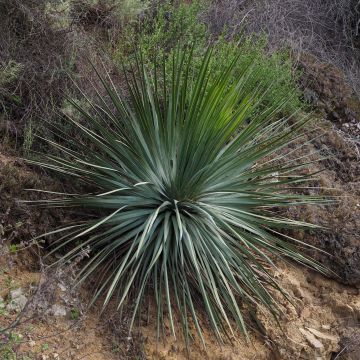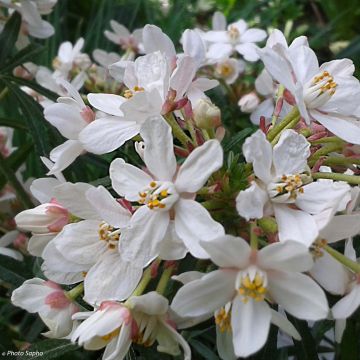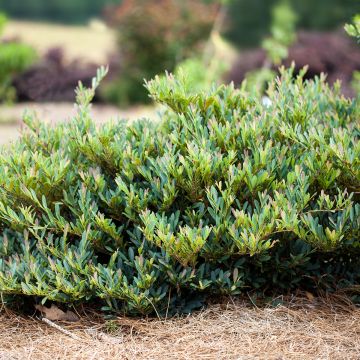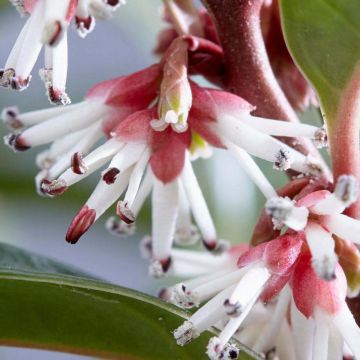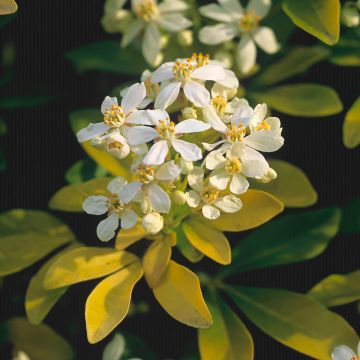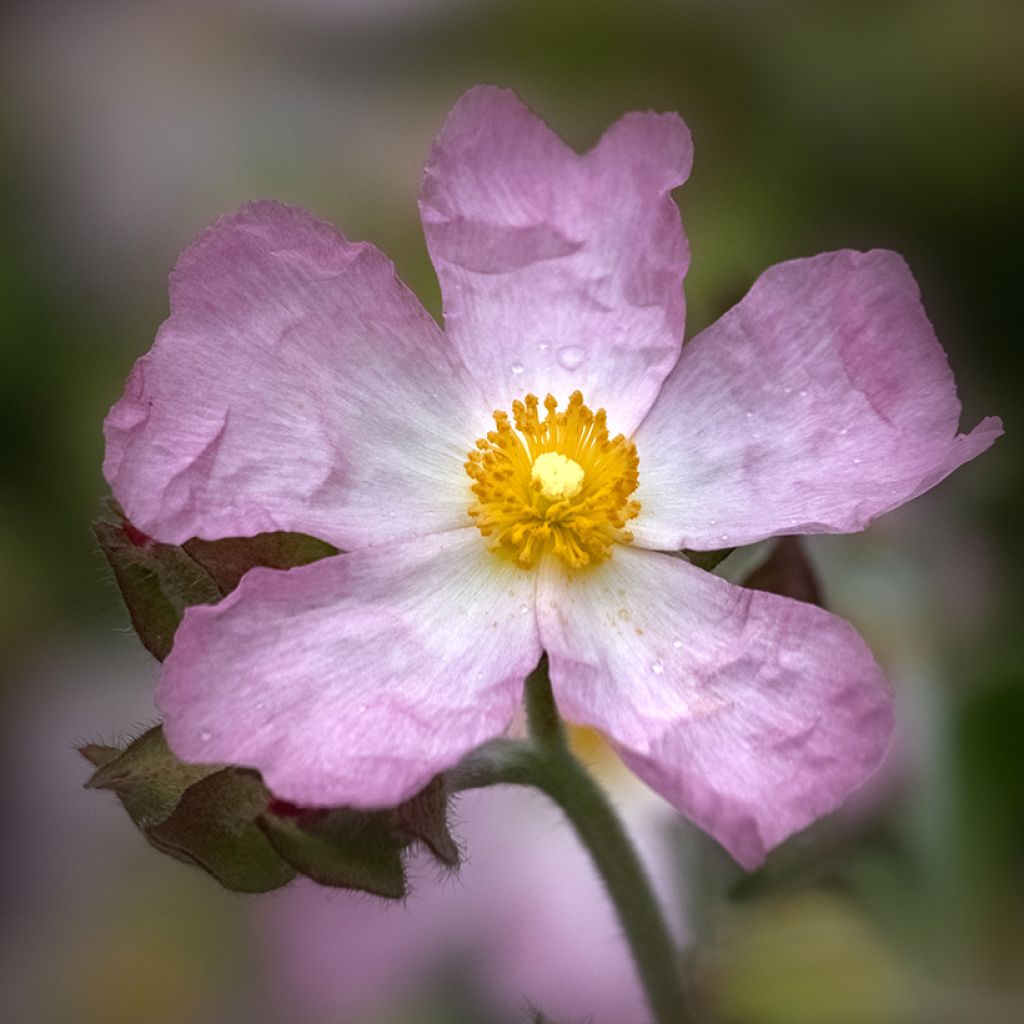

Cistus Grayswood Pink
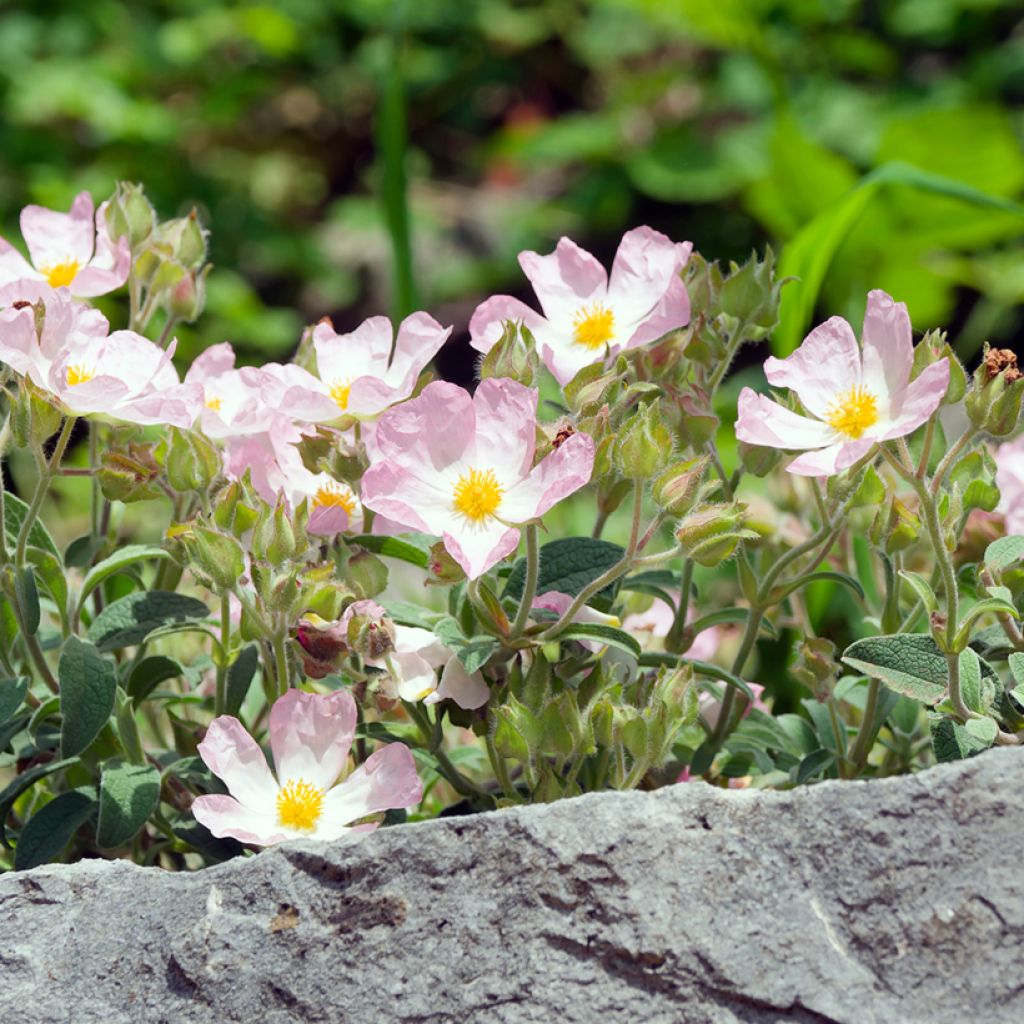

Cistus Grayswood Pink
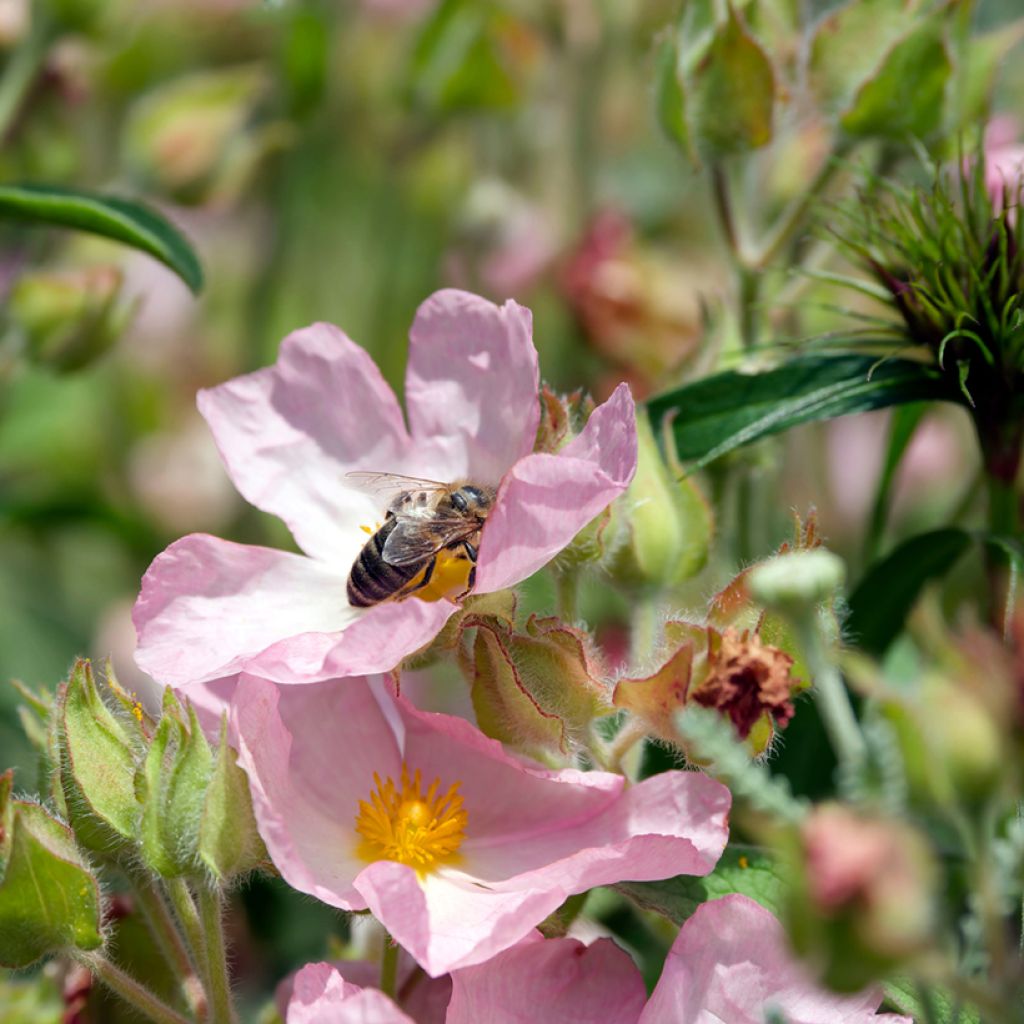

Cistus Grayswood Pink
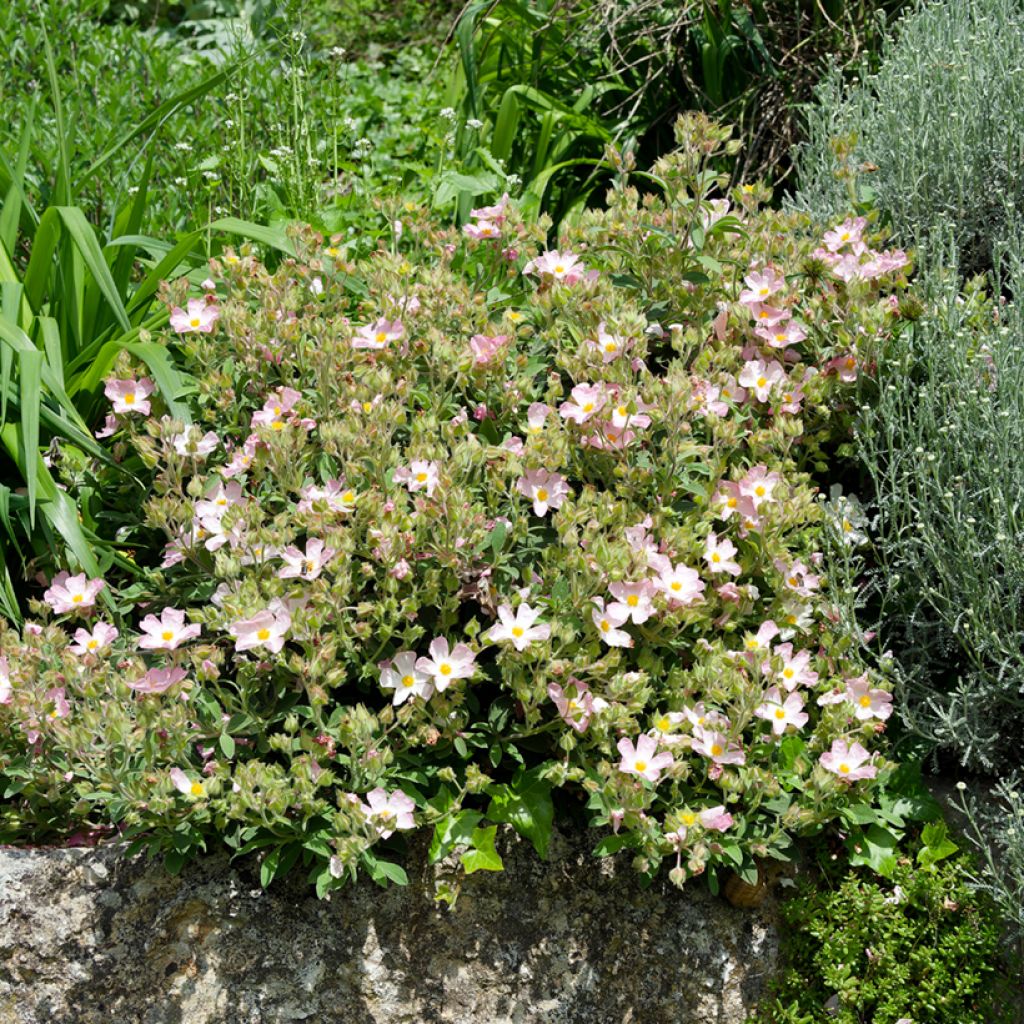

Cistus Grayswood Pink
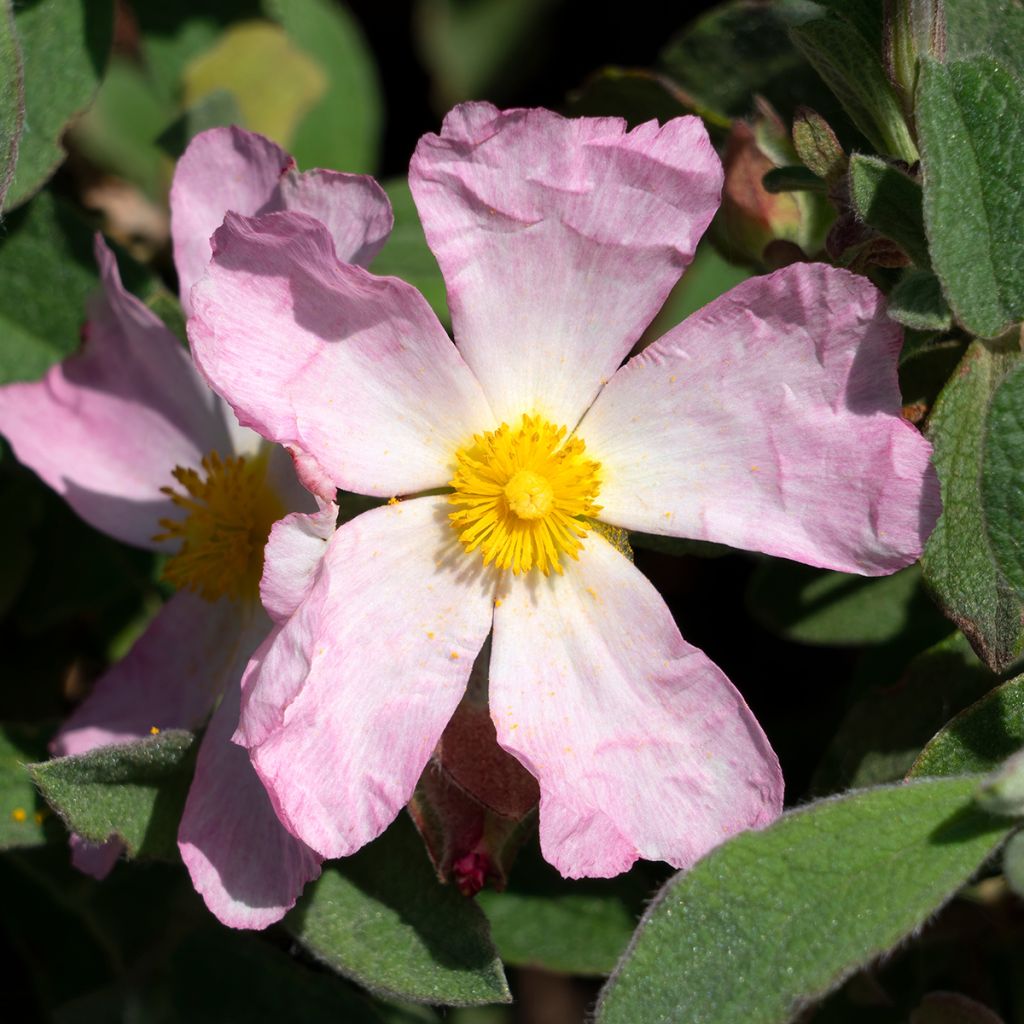

Cistus Grayswood Pink
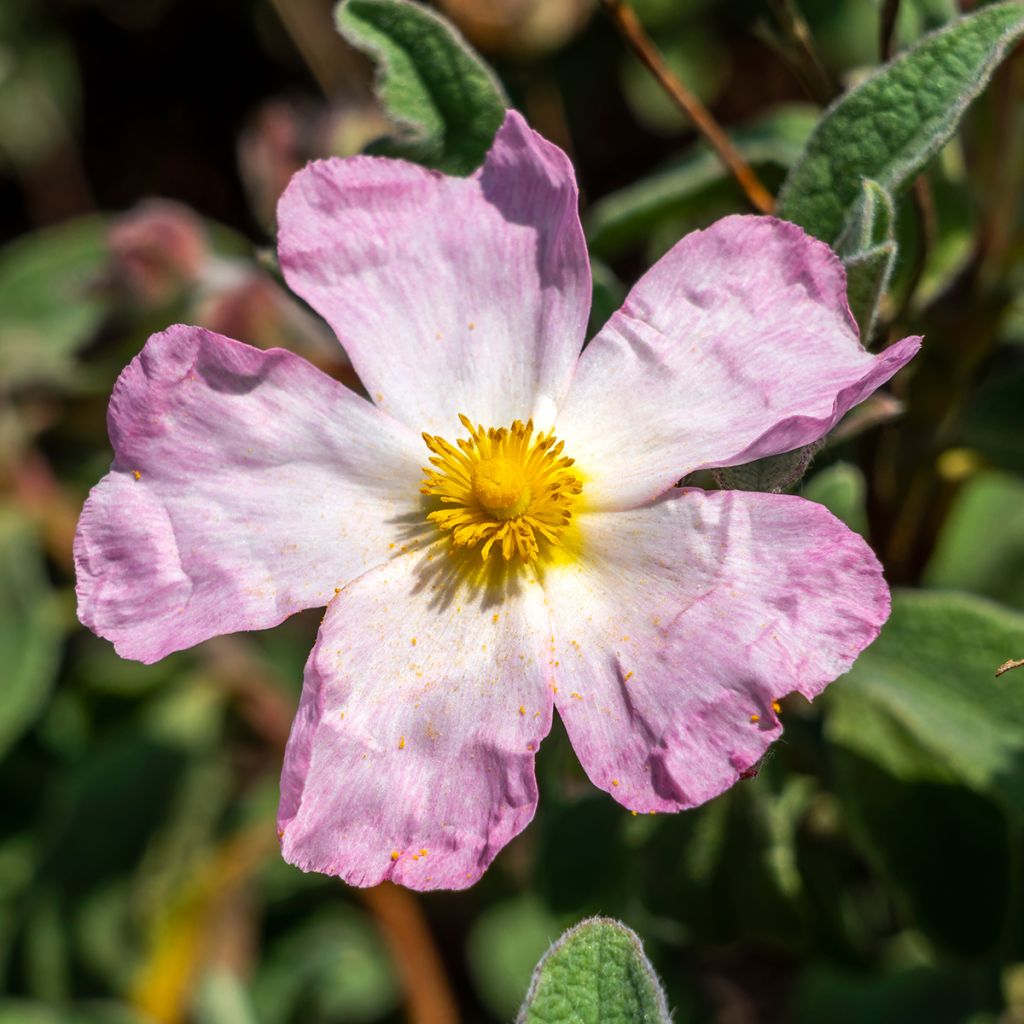

Cistus Grayswood Pink
Cistus Grayswood Pink
Cistus x lenis Grayswood Pink
Why not try an alternative variety in stock?
View all →This plant carries a 24 months recovery warranty
More information
We guarantee the quality of our plants for a full growing cycle, and will replace at our expense any plant that fails to recover under normal climatic and planting conditions.
From €5.90 for pickup delivery and €6.90 for home delivery
Express home delivery from €8.90.
Delivery to Corse prohibited: UE law prohibits the import of this plant from mainland France to Corse as part of the fight against Xylella fastidiosa. Please accept our sincere apologies.
More information
Does this plant fit my garden?
Set up your Plantfit profile →
Description
The Cistus 'Grayswood Pink' is a hybrid shrub with a spreading growth habit, abundant pastel pink spring flowering, and good cold resistance. It is an evergreen Mediterranean shrub perfectly adapted to dry and poor soils, forming an excellent ground cover. Its grey-green vegetation is covered with flowers for three weeks in spring. Cistus plants clearly express the spirit of the Mediterranean scrubland, and to successfully grow them, it is essential to provide them with what they like: poor, well-draining soil that is dry in summer and a sheltered position away from cold winds. This shrub will look superb in a rock garden or above a low wall.
This 'Grayswood Pink' variety combines C. sintenisii and C. parviflorus. Like all rockroses, these plants belong to the Cistaceae family. This highly branched shrub has a prostrate, low, and wide habit. Eventually, it reaches a 30 to 40 cm height with a spread of 1 to 1.40 m. It has rapid growth, but its lifespan rarely exceeds 10 to 12 years. The very abundant flowering occurs from March to May, depending on the climate. The small single flowers, measuring 3-4 cm in diameter, have slightly crumpled pale pink petals on the edges and are whiter towards the centre. A cluster of golden yellow stamens occupies the corolla's centre. Each flower only lives for a few hours, but there are countless buds, ensuring a flowering period that lasts for three weeks. The small oval leaves are evergreen in winter, grey-green in colour, and become grey in summer. This rockrose's root system is deep and ramified, so powerful that it manages to penetrate between fractured rocks to draw the slightest trace of moisture from deep down while its surface roots capture moisture from the topsoil. They possess allelopathic properties that limit the germination and growth of other competing plants.
The 'Grayswood Pink' rockrose is a plant that thrives in rocky and poor soil and is hardy down to -15 °C. It is perfectly adapted to drought, with delicate flowers that hide a robustness that can withstand arid conditions. It will look magnificent when placed in a raised position, in a rock garden, on a slope, or above a low wall, forming a beautiful cascade of flowers in spring. Create a persistent bed to accompany your rockrose, evoking the Mediterranean scrubland by mixing foliage and fragrances of lavenders, creeping rosemary, thymes, teucriums, and other aromatic perennials. Add, for example, some California poppies and Corsican spurge to bring some dynamism to your composition. You can plant this rockrose in coastal gardens as it tolerates sea spray.
Note: The Cistus x lenis 'Grayswood Pink' is sometimes marketed under Cistus x argenteus 'Silver Pink', as these two hybrids appear very similar. However, there is some confusion in the nomenclature, and not all specialists agree on merging the two varieties. For some, it could be the 'Barnsley Pink' variety, while others believe the latter is a seedling of 'Grayswood Pink'. However, the name Cistus x parviflorus 'Grayswood Pink' is incorrect.
Cistus Grayswood Pink in pictures


Plant habit
Flowering
Foliage
Botanical data
Cistus
x lenis
Grayswood Pink
Cistaceae
Cistus (x) argenteus 'Silver Pink'
Mediterranean
Other Cistus - Rockrose
Planting and care
The 'Grayswood Pink' Cistus requires perfectly drained, stony, sandy soil, which is poor, slightly acidic, neutral, or even slightly chalky. Plant it after the last frost in cooler climates and in September-October in hot and dry climates. It appreciates the sun, but in warmer climates, it tolerates partial shade well, on the edge of the undergrowth. It does not fear the root competition of large trees. This plant dreads icy winds that can destroy its flower buds. It is hardy up to -15°C once mature and planted in the appropriate conditions. Install your cistus in the warmest corner of the garden, in full sun, against a south-facing wall, in a stony or sandy slope, or any substrate that does not retain moisture, which would be fatal to it in winter but also in summer, which is its period of vegetative rest. The combination of heat and humidity leads to the development of a fungus that attacks the collar of the plant and will be fatal to it. You can lightly prune the stems after flowering to encourage the plant to branch out. The cistus does not tolerate severe pruning on old wood.
Planting period
Intended location
Care
This item has not been reviewed yet - be the first to leave a review about it.
Evergreen shrubs
Haven't found what you were looking for?
Hardiness is the lowest winter temperature a plant can endure without suffering serious damage or even dying. However, hardiness is affected by location (a sheltered area, such as a patio), protection (winter cover) and soil type (hardiness is improved by well-drained soil).

Photo Sharing Terms & Conditions
In order to encourage gardeners to interact and share their experiences, Promesse de fleurs offers various media enabling content to be uploaded onto its Site - in particular via the ‘Photo sharing’ module.
The User agrees to refrain from:
- Posting any content that is illegal, prejudicial, insulting, racist, inciteful to hatred, revisionist, contrary to public decency, that infringes on privacy or on the privacy rights of third parties, in particular the publicity rights of persons and goods, intellectual property rights, or the right to privacy.
- Submitting content on behalf of a third party;
- Impersonate the identity of a third party and/or publish any personal information about a third party;
In general, the User undertakes to refrain from any unethical behaviour.
All Content (in particular text, comments, files, images, photos, videos, creative works, etc.), which may be subject to property or intellectual property rights, image or other private rights, shall remain the property of the User, subject to the limited rights granted by the terms of the licence granted by Promesse de fleurs as stated below. Users are at liberty to publish or not to publish such Content on the Site, notably via the ‘Photo Sharing’ facility, and accept that this Content shall be made public and freely accessible, notably on the Internet.
Users further acknowledge, undertake to have ,and guarantee that they hold all necessary rights and permissions to publish such material on the Site, in particular with regard to the legislation in force pertaining to any privacy, property, intellectual property, image, or contractual rights, or rights of any other nature. By publishing such Content on the Site, Users acknowledge accepting full liability as publishers of the Content within the meaning of the law, and grant Promesse de fleurs, free of charge, an inclusive, worldwide licence for the said Content for the entire duration of its publication, including all reproduction, representation, up/downloading, displaying, performing, transmission, and storage rights.
Users also grant permission for their name to be linked to the Content and accept that this link may not always be made available.
By engaging in posting material, Users consent to their Content becoming automatically accessible on the Internet, in particular on other sites and/or blogs and/or web pages of the Promesse de fleurs site, including in particular social pages and the Promesse de fleurs catalogue.
Users may secure the removal of entrusted content free of charge by issuing a simple request via our contact form.

































